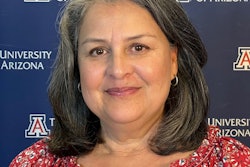NEW YORK
With the increase in the nation’s Hispanic population, policymakers must address the “opportunity gap” as an education challenge, says Dr. Pedro A. Noguera, a professor at the Steinhardt School of Culture, Education and Human Development at New York University.
“The opportunity gap [is] the gap in the opportunity to attend well-funded schools that can offer a good education,” he said in a recent radio interview on National Public Radio. “Latino students in this country are more segregated now than any other group and are more likely to go to schools that have very few resources, and not surprisingly have some of the highest dropout rates in the country.”
Recent data from the U.S. Census reported that the Hispanic population increased by 3.3 percent from July 1, 2006, to July, 1, 2007, and it also reported that nearly a quarter of the children younger than five in the U.S. are Latino. Statistics based on national standardized tests have shown that Latino students, like African Americans, lag behind their peers in reading and math scores, a problem educators have dubbed “the achievement gap.” Latino students also have higher dropout rates and are less likely to attend college, according to recent statistics gathered from the U.S. Department of Education.
Professor Noguera has written extensively on this issue. Noguera, whose parents are Caribbean immigrants, was raised in New York and attended public schools in Long Island. He received both his bachelor’s and master’s degrees from Brown University; and he attended the University of California at Berkeley, where he earned his Ph.D. in sociology. He has taught in education
for about 30 years and worked as a teacher, school-board member, administrator and researcher.
In 2003, he published City Schools and the American Dream: Reclaiming the Promise of Public Education (Teachers College Press), an award-winning book that focused on the conditions of urban schools and solutions.
In his latest book, The Trouble With Black Boys… and Other Reflections on Race, Equity and the Future of Public Education (Jossey-Bass, April 2008), Professor Noguera discusses the complex factors — chief among them he cites educators themselves — that help to shape a student’s educational outcome. In his book, he devotes a chapter to the dilemmas that Latino immigrants and students face.
Q&A: “Culturally Relevant” Curriculum
After a recent book signing in Harlem, Professor Noguera answered questions for DIVERSE Issues in Higher Education’s Hispanic Channel about Latino students, immigrants and educators.
DIVERSE: On the NPR’s “Tell Me More”, you stated: “We need to understand the culture of children and how to make the curriculum relevant to their lives and their experience, so that they will be more motivated to learn.” Is this widespread thinking among many educators, particularly those not from an American background, who teach kids from various backgrounds and at all levels of education?
NOGUERA: “Unfortunately, there is a lot of confusion about what it means to make the curriculum culturally relevant. Many educators, including educators of color, take this to mean that Black [and Hispanic] children learn in a particular way. This contributes to stereotypes based on broad generalizations. What I am referring to is the need for educators to understand how their children process information, reason, use literacy, etc. in their everyday lives. Such information can be used by educators to make the curriculum relevant to topics that are of interest to their children and tap into the way they think and reason about facts, numbers, events, etc.
DIVERSE: What are some of the learning tools or methods that teachers may use to gain some understanding of the students’ cultural background?
NOGUERA: They need to spend more time listening to their students and parents talk about their experiences outside of school. By being good listeners, teachers can pick up on the needs, interests and challenges their students face. They can also read relevant books and research that address aspects of the lives of the children they teach. Finally, they can talk to experienced educators who have a track record of being effective at teaching the children they are concerned about and learn from them.
DIVERSE: Is there a different set of these tools for each kid, or should there be?
NOGUERA: To some degree, yes. The learning needs of children are highly personal, and ideally, each child needs someone who understands what they need to learn and (who) has a clear sense of how to teach and motivate them. Making the curriculum culturally relevant should not be interpreted as a strategy for teaching children of color in a particular way. Of course, this
requires a lot of time and attention to be done well. Not all Black or Latino children learn in the same ways. Not even children from the same family learn in the same ways.
DIVERSE: You mentioned that there should be basic standards to promote achievement in schools, could you repeat that thought?
NOGUERA: We need standards related to the conditions for learning — school facilities, learning materials, class size, etc. Right now, there are no basic standards in these areas and consequently, a tremendous degree of inequity characterizes conditions for learning for many children in the U.S.
With regard to the factors that hinder Hispanic children from going to college the Number One obstacle is poverty. The second obstacle is lack of information about college and lack of access (social capital) to people who can open doors and expand opportunity.
DIVERSE: Any suggestions about what methods can be used to help motivate Hispanic [and all kids] to learn?
NOGUERA: We need to address the conditions for learning described previously and focus on recruiting competent teachers who have a commitment to serving the needs of Latino children and who do not regard cultural or linguistic differences as a liability.
Some immigrant students who come to this country illiterate in their native language have trouble acquiring academic English in school. This is because students use their primary language as a bridge for acquiring the second language. It is also true that many schools segregate students on the basis of language differences and relegate non-English speakers to low-tracked classes.
I also want to say that we [as teachers] have to speak out for kids who have no voice; for parents who are unable to pick up and take part in their kid’s education. If teachers believed more like coaches, who aim for winning, we’d see better academic success.
Clarence V. Reynolds is an editor who lives in New York.
Click here to post and read comments
© Copyright 2005 by DiverseEducation.com















